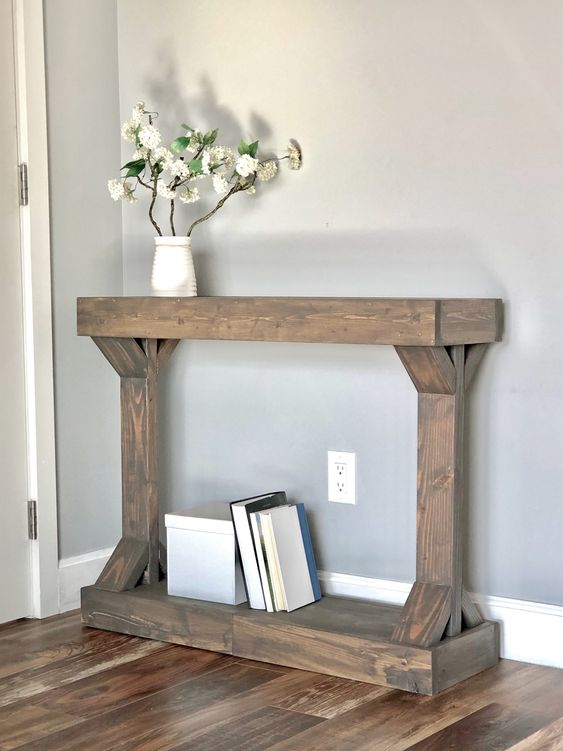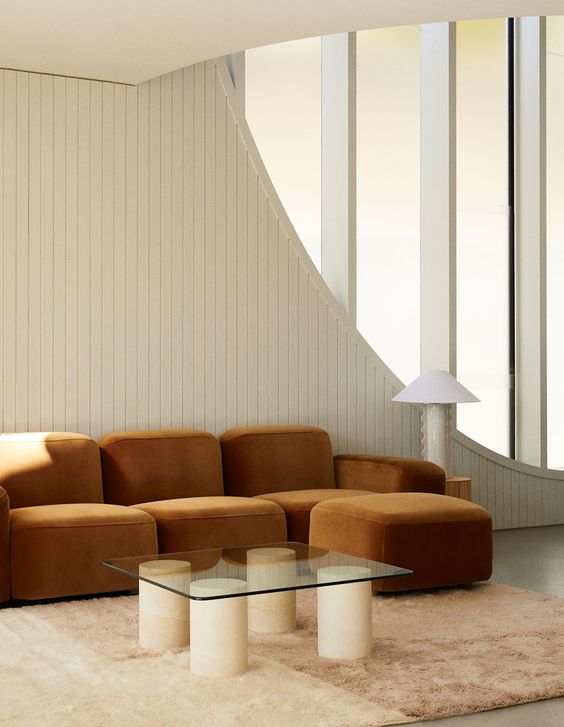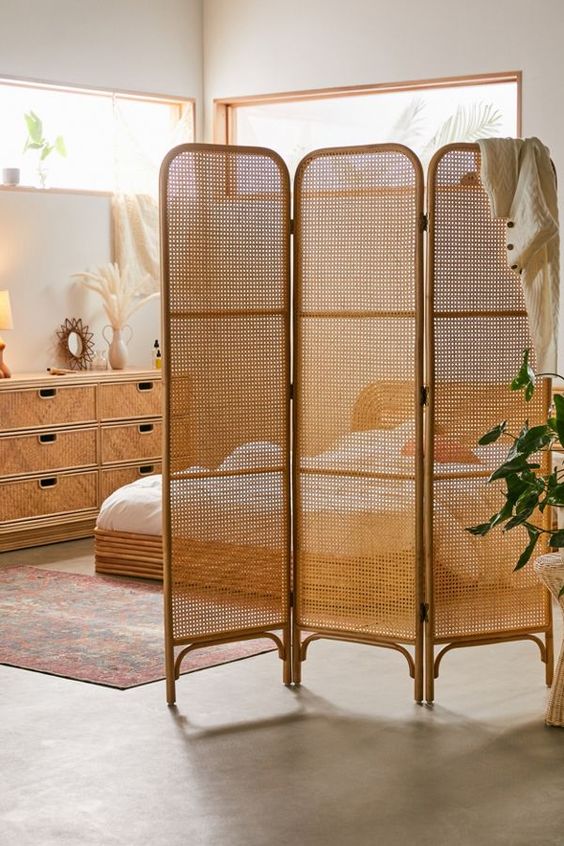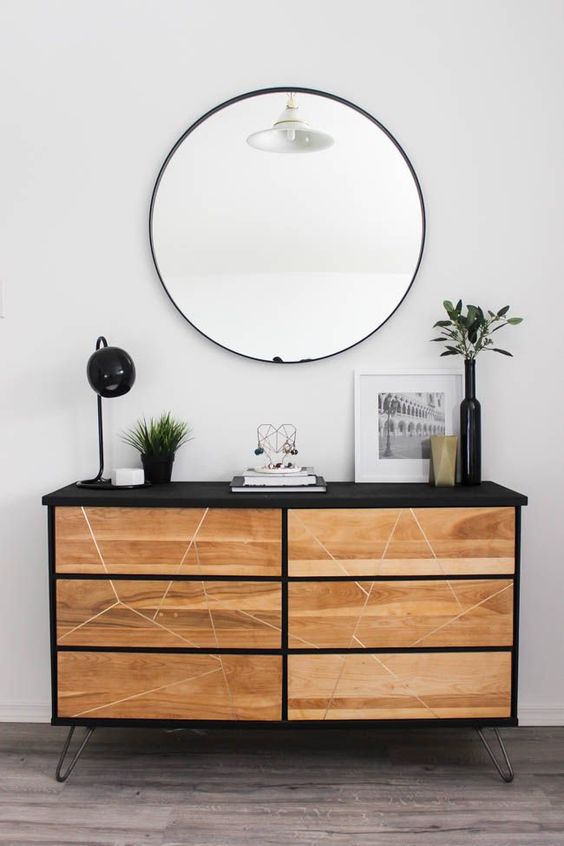The 1970s were a bold, expressive, and deeply experimental decade for interior design. A time of rebellion against the rigid minimalism of the previous decades, the '70s introduced a warm, eclectic, and often psychedelic approach to home decor. Furniture was no longer just functional; it became a statement, a reflection of personality, and an art form in itself. Today, as we see a resurgence of '70s-inspired interiors, certain distinctive furniture pieces have made a comeback, capturing the essence of this iconic era while adapting to modern sensibilities.
The Revival of the Conversation Pit
One of the most iconic design elements of the 1970s was the conversation pit—a recessed seating area that encouraged intimacy and social interaction. These built-in lounge areas, often covered in plush, velvety upholstery, were the heart of many homes. Today, while traditional sunken pits may not be feasible for every home, modular sectionals and curved sofas offer a contemporary nod to this inviting concept. The idea remains the same: furniture should facilitate connection, comfort, and relaxation.
The Era of Chunky, Sculptural Sofas
The '70s were a departure from the sleek, mid-century modern designs of the '50s and '60s. Sofas became oversized, often featuring exaggerated curves, deep tufting, and lush, tactile fabrics like velvet and corduroy. The return of Mario Bellini’s Camaleonda sofa—a modular, bubble-like masterpiece—proves that we are still in love with this decade’s penchant for drama and comfort. Similarly, the Togo sofa by Michel Ducaroy, with its ergonomic, low-profile silhouette, is making waves in contemporary interiors, blending nostalgia with modern-day luxury.
Psychedelic and Earthy Color Palettes
If the 1960s were about bright, pop-art colors, the '70s took a more grounded approach, embracing warm, earthy tones. Mustard yellow, burnt orange, deep avocado green, and rich browns dominated interiors, often paired with bold patterns. Today, these hues are finding their way back into our homes, often in the form of accent chairs, retro-inspired credenzas, or ceramic coffee tables with intricate mosaic designs. The resurgence of these palettes speaks to a longing for warmth and coziness in an increasingly digital and fast-paced world.
Rattan and Wicker: Nature Indoors
While rattan and wicker furniture had been around for centuries, the '70s saw them explode in popularity. Whether it was the peacock chair, hanging egg chairs, or intricately woven coffee tables, these natural materials added an element of bohemian charm to interiors. The beauty of rattan lies in its ability to balance structure and airiness. Today, rattan is experiencing a major comeback, but with a modern twist—think sleek, minimalist designs rather than overly ornate patterns. The appeal remains the same: a connection to nature and a laid-back, effortless aesthetic.
Shag Rugs and Plush Textures
No discussion of '70s interiors would be complete without mentioning the tactile indulgence of shag rugs. These thick, high-pile carpets transformed cold, hard floors into inviting, cozy landscapes. In contemporary interiors, shag rugs are back, often in neutral, monochromatic tones rather than the rainbow hues of the past. The key takeaway? Texture is just as important as color and shape when it comes to designing a space that feels inviting.
The Unexpected Beauty of Lucite and Chrome
The 1970s were also about experimentation, and nothing embodied this better than the use of Lucite and chrome. Transparent acrylic furniture—think waterfall coffee tables and ghost chairs—created an airy, futuristic vibe, while chrome bar stools and lighting fixtures added a space-age sophistication. Today, these materials are being revived in subtler ways, such as in the form of minimalist shelving units, sleek dining chairs, and light fixtures that blend retro appeal with contemporary elegance.
Sculptural Lighting: More Than Just Illumination
Lighting in the '70s was often as much an art piece as it was a functional element. Oversized arc lamps, globe pendant lights, and sculptural floor lamps set the mood with a warm, diffused glow. One of the most beloved designs of this era, the mushroom lamp, has made a significant comeback, with its soft curves and milky glass evoking a sense of nostalgia while fitting seamlessly into modern interiors. Similarly, space-age Sputnik chandeliers, once considered avant-garde, now add a touch of retro-futurism to contemporary homes.
The Rise of Multifunctional Furniture
Another key aspect of '70s design was its embrace of multifunctionality. Futuristic pod chairs that doubled as soundproof retreats, Murphy beds that folded into walls, and modular shelving systems like the String system exemplified the decade’s innovative approach to space-saving solutions. Today, as urban living spaces shrink, the same principles apply. Convertible furniture, nesting tables, and fold-out desks pay homage to the '70s ethos of adaptability and practicality.
Why Are We Drawn to '70s Design Today?
The resurgence of '70s-inspired furniture isn’t just about aesthetics; it’s about a longing for a different way of living. The '70s were about breaking away from the conventional, embracing self-expression, and cultivating warmth and togetherness in the home. At a time when digital overload and fast-paced living can feel overwhelming, there’s something deeply comforting about the tactile richness, bold shapes, and earthy colors of this era. It reminds us to slow down, to gather, and to find joy in the spaces we inhabit.
Whether it’s through a curved sofa, a rattan chair, or a shag rug, incorporating elements of '70s design into modern interiors allows us to create homes that feel both nostalgic and refreshingly current. The best part? You don’t have to go all-in on the retro aesthetic—just a few statement pieces can capture the essence of the decade while still feeling contemporary. So, if you're looking to infuse your home with personality, warmth, and a touch of rebellion, take a page from the '70s playbook. It’s a design era that was never afraid to have fun, and neither should you.













Post a Comment